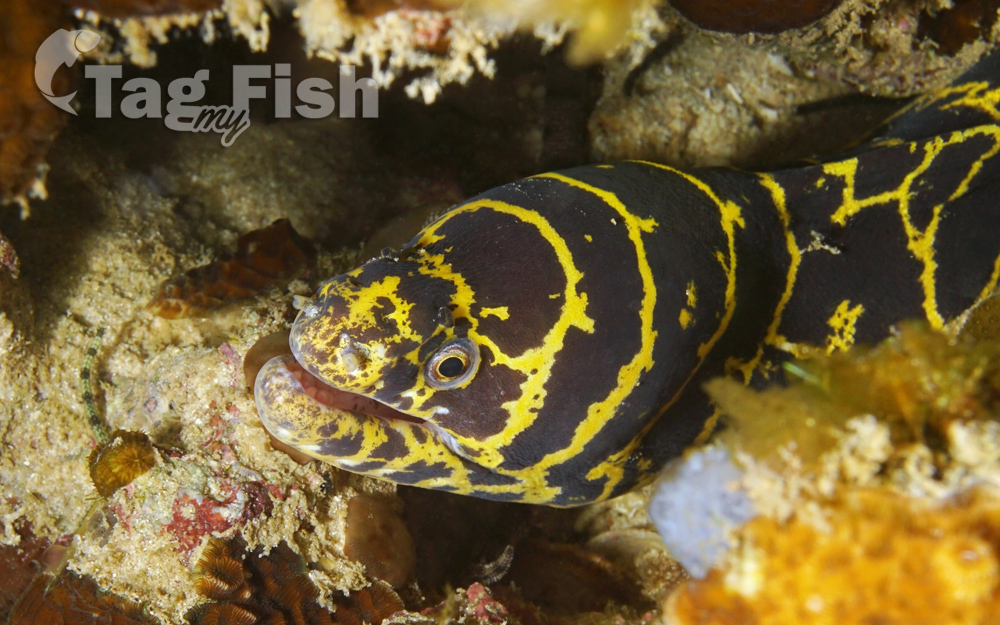Chain moray
(Echidna catenata)

Classification
General data
Echidna catenata, commonly known as the chain moray, is a moray eel found in shallow parts of the western Atlantic Ocean and from islands elsewhere in the Atlantic. It occasionally makes its way into the aquarium trade. It grows to a maximum length of 165 cm (65 in) but a more common length is about 40 cm (16 in).
Description
The chain moray is an elongated, heavy, eel-like fish that commonly grows to a length of about 30 to 45 cm (12 to 18 in). The head has a rounded snout and pointed, blunt teeth, especially on the roof of the mouth. These teeth are used to crush the shells of crabs, their main source of food. The dorsal, tail and anal fins are combined into a single long fin, and there are no pectoral or ventral fins. The skin does not bear scales but is covered with a layer of clear mucus. This fish is dark brown to black, marked with an interconnecting lattice-work of yellow, chain-like lines. The eyes are yellow.
Distribution and habitat
The species is found in the western Atlantic Ocean, where its range extends from Bermuda, Florida, and the Bahamas, to the Antilles and Brazil. It is common in the Caribbean, and is also reported from the eastern Atlantic (Cape Verde and Ascension Island) and some southern Atlantic islands. It is found on reefs and rocky shores in clear water at depths of less than 12 m (39 ft), and usually within 2 metres (6 ft) of the surface.










